Viladrau
Mark and I have a unique ability to get ourselves engaged in wonderful scenarios where we are embraced by local people. Last month it was the calçots party in the country where we picked 400 calçot onions and grilled them, dipped them in romanescu sauce and devoured them, getting our hands and clothes dirty and becoming part of the Catlån tradition.
This weekend we got one such invitation by an exceptionally friendly lady named Sara we know from the Gracia Gitano dog park. I used to take both dogs to the Gitano park, but the last few weeks of Pukka’s life I would take her alone and let Mark worry about Haka. Sara knew Pukka and grieved with me when she died. After Pukka’s death I sat desolately on the park bench with Sara, who would cheer me up with stories of Viladrau, in the nearby mountain, Monseny, where she has a house. Sara has a naturally mischievous twinkle in her eyes which reminds me of the childhood girlfriend I always got in trouble with as a kid. She is a natural accomplice.

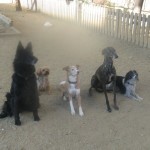
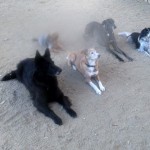
Mark and Haka were at the dog park last week when Sara approached him. She invited us all up to spend the weekend in Viladrau, famous for its pure water which is bottled and sold throughout Spain. Mark knew it would be good for him if he were forced to speak Spanish all weekend, so he accepted. Haka was invited too, of course. The seven of us; Mark, Sara, Ricardo and I plus Haka, Cip (pronounced ¨cheep¨, an extremely active and likeable chihuahua), and Kira, who looks like a fox, not a dog. Four humans, three dogs. We all packed into Ricardo´s minivan and did the 70 km trek up highway C-17, direction Montseny.
At the base of the road forking off up the 4km windy road to Viladrau we made a stop to see ¨La Barbara¨. Sara had told me about La Barbara at the dog park, said she was a friend who gave her 3 midget bunnies for Christmas. Sara says, ¨Now I’m stuck with 3 midget rabbits who poo, take up space and aren’t even edible.¨ I offered to help her sell them or give them away on La Rambla. Its a deal. We´ll do it sometime. Heh heh heh. She is proving to be like my childhood sidekick, always up for a funny adventure. (or the idea of it, anyway).
La Barbara turns out to be a scene like an animated medieval Pieter Brueghel painting. We are greeted by a blonde Flemish looking teenage girl riding a small horse, La Barbara’s daughter presumably. Young dreadlocked kids of all ages, all of them blonde and engaged in various forms of farm related activity. A young boy pushes a wheelbarrow of hay. A young girl feeds the geese. They speak Catalån. It turns out they are actually Catalån speaking Germans. We see goats, sheep, cows and horses grazing in the environs of a roman fortress/stable, with stone arches leading to stalls once used to keep sheep and horses in, now used to store hay, farm tools, etc.
We climb the ancient concrete stairs to reach the main barn, full of bleating sheep and other barnyard animals. There is a very young screaming human baby all alone in the patio, and inside the barn we find La Barbera hand feeding a goat calf through a baby bottle. She speaks Catalån to Sara and Ricardo, informing them that the goat’s mother had died so they were hand feeding her. I’m thinking, ¨what about the human baby crying out back¨ but didn’t say anything. We wait for her to finish feeding the baby goat and then Sara follows La Barbara into the back recesses of the barn. Ten minutes later Sara returns grinning from ear to ear, with a bottle of fresh goat milk in one hand and a big carton of about 30 fresh laid eggs in the other.
We all crammed back into the minivan and did the last 4 km to the place in Viladrau that Sara and her sisters have inherited from their great grandparents. Many years ago this family estate was compartmentalized into five individual self sustained units plus an attic where extra kids can sleep when necessary. Sara showed us the compartment she had inherited and gave us a choice from two of the other ones on the same level as she. We chose the one next door.
Our new friends are delightful people. When we strolled through town Sara introduced us to several of her childhood friends who still live there. Over the weekend she told me hilarious stories of playing tricks on her grandmother, who was always chasing them around trying to make them behave. We traded tragic animal stories with ironic, funny, horrible endings.
Now Sara lives in Gracia with Ricardo and her 18 year old son, 2 dogs and 3 rabbits in a three level hobbit´like dwelling with a sunny terrace up top. Her mother lives around the block and her sister lives down the street. They all were born and raised in my Gracia neighborhood, but growing up she would spend summers and holidays at Viladrau with her grandparents.
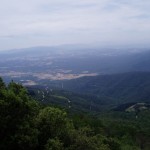
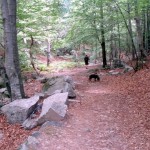
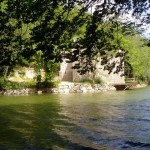

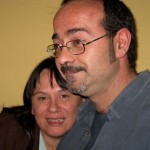
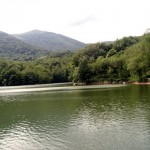
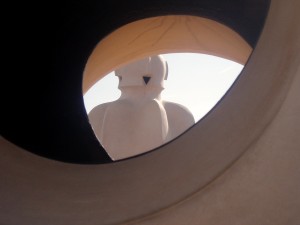
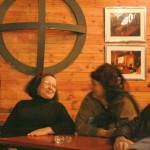
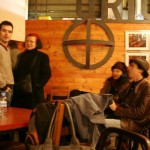


Recent Comments